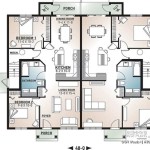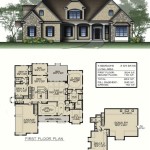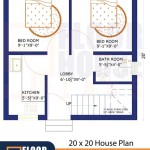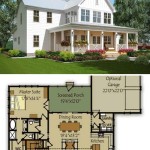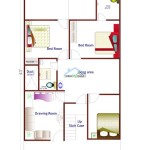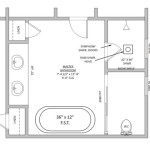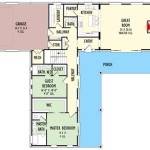Single Level Home Floor Plans: Designing Your Dream Home
Single-level homes, also known as ranch-style homes, offer a practical and comfortable living experience by eliminating stairs and providing easy access to all areas of the house. If you're considering building a single-level home, understanding the different floor plan options available is essential. Here's a comprehensive guide to single-level home floor plans, their benefits, considerations, and tips for creating the perfect layout for your needs.
Benefits of Single-Level Homes
Single-level homes provide several advantages over multi-level homes, including:
- Accessibility: With no stairs or steps to navigate, single-level homes are ideal for people of all ages and abilities, including seniors, individuals with disabilities, and young children.
- Energy Efficiency: By eliminating the need for heating and cooling multiple levels, single-level homes can be more energy-efficient.
- Convenience: Everything you need is within easy reach, making daily routines and tasks more convenient.
- Cost-Effective: Building and maintaining a single-level home can be more cost-effective than a multi-level home due to reduced materials and labor requirements.
Floor Plan Considerations
When choosing a single-level home floor plan, consider the following factors:
- Bedroom Placement: Place bedrooms in a separate wing of the house for privacy and noise reduction.
- Kitchen and Dining Area: Design a kitchen that is functional and flows well into the dining area.
- Living Spaces: Create comfortable and inviting living spaces that promote relaxation and entertaining.
- Outdoor Living: Integrate outdoor living spaces, such as patios or decks, to extend the living area and connect with nature.
- Natural Light and Ventilation: Maximize natural light and ventilation throughout the home to create a healthy and comfortable environment.
Types of Single-Level Home Floor Plans
There are various single-level home floor plan designs available, each with its own advantages:
- U-Shaped Floor Plan: This layout creates a courtyard-like space with bedrooms on one side and living spaces on the other.
- L-Shaped Floor Plan: Similar to the U-shaped plan, this layout provides privacy for bedrooms and defines separate areas for living.
- Square Floor Plan: A compact and efficient design with rooms arranged around a central living space.
- Rectangular Floor Plan: A traditional layout that offers flexibility and allows for various room configurations.
- Open Floor Plan: This plan eliminates walls between living spaces, creating a spacious and cohesive area.
Tips for Creating the Perfect Floor Plan
To create the ideal single-level home floor plan, consider the following tips:
- Identify Your Needs: Determine the number of bedrooms, bathrooms, and living spaces you need.
- Consider Lifestyle: Plan for spaces that support your lifestyle, such as a home office or a dedicated hobby room.
- Flow and Function: Ensure a smooth flow between rooms and minimize wasted space.
- Natural Light: Position windows strategically to maximize natural light and reduce energy consumption.
- Privacy and Flexibility: Create separate zones for private and public areas while allowing for future flexibility.
Single-level home floor plans offer a range of benefits, from accessibility to energy efficiency. By understanding the different floor plan options, considering your needs, and following these tips, you can create a custom floor plan that perfectly suits your lifestyle and vision for your dream home.

Must Have One Story Open Floor Plans Blog Eplans Com

1323 Floor Plan Single Level House Plans Garage Y

Attractive One Level Home Plan 19506jf Architectural Designs House Plans

Single Level 3 Bed House Plan With Split Layout 790024glv Architectural Designs Plans

Contemporary Floor Plan Main 45 428 Modular Home Plans House One Story 1200 Sq Ft

Stylish One Story House Plans Blog Eplans Com

Unique One Story House Plans Monster

Pin On Homes

Single Story Floor Plan New Era Homes

One Story Modern Farmhouse Floor Plans

